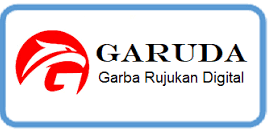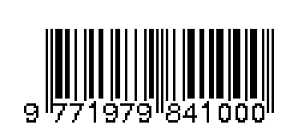KOMPARASI ALGORITMA CLUSTERING DENGAN DATASET PENYEBARAN COVID-19 DI INDONESIA PERIODE MARET-MEI 2020
DOI:
https://doi.org/10.34151/technoscientia.v13i1.2961Keywords:
Clustering algorithm, Data mining, Weka toolsAbstract
In data mining, there is a predictive model, namely predicting the value of different sample data sets, and testing into three types such as classification, regression and time series. While descriptive models allow us to determine patterns in sample data and divide them into groups, summaries and association rules. Report on the results of experiments on algorithms that are quite widely used in the field of machine learning. This experiment aims to measure performance on commonly used datasets in machine learning studies. The main performance factor to be compared in this experiment is the level of accuracy of the independent experiments on the dataset used. This research uses clustering algorithm method to compare various clustering algorithms using Weka Tools to find out which algorithm will be more convenient for users to do clustering algorithm using the Covid-10 distribution map dataset in Indonesia from March-May 2020. K-means taking the points closest to the center whereas Farthest-First picks the furthest points. Farthest-First can complete the clustering process but with a lower quality than K-Means. And other experiments, on the method of Making Based on Clusterd Density and EM (Expectation-Maximization) prove the same accuracy. The EM grouping method proves low (less than 50%) of the results comparing the Clusterd Based Densitity Making Method, with a percentage reaching 74%.
References
Asroni, A.R., 2015, Penerapan Metode K-Means Untuk Clustering Mahasiswa Berdasarkan Nilai Akademik dengan Weka Interface Studi Kasus Pada Jurusan Teknik Informatika UMM Magelang, Jurnal Ilmiah Semesta Teknika, 18(1): 76-82, Mei 2015.
Sindi, S., Ningse, W.R.O., Sihombing, I.A., Zer, F.I.R.H., Hartama, D., 2020, Analisis Algoritma K-Medoids Clustring Dalam Pengelompokan Penyebaran Covid-19 di Indonesia, Jurnal Teknologi Informasi, 4(1): 166-173.
Rahman, A.T., 2017, Coal Trade Data Clustering Using K-Means (Case Study PT. Global Bangkit Utama), ITSMART: Jurnal Teknologi dan Informasi, 6(1): 24-31.
Han, J. and Kamber, M., 2006. Data Mining: Concepts and Techniques, 2nd edition, San Francisco: Elsevier. Inc.
Berry, M.J. and Linoff, G.S., 2004, Data Mining Techniques For Marketing, Sales, & Customer Relationship Management, 2nd edition, Indiana: Wiley Publishing, Inc.
Sharma, N., Bajpai, A., and Litoriya, R., 2012, Comparison the various clustering algorithms of Weka Tools, International Journal of Emerging Technology and Advanced Engineering, 2(5), May 2012.
Jain K., and Dubes, R.C., 1988, Algorithms for Clustering Data, New Jersey: Prentice-Hall, Inc.
Witten, I.H., Frank, E., Trigg, T., Hall, M., 2002, Holmes,G., and Cunningham, S.J., 2002, WEKA: Practical Machine Learning Tools and Techniques with Java Implementations.
Pelleg D. and Moore, A., 2002, X-means: Extending K-means with Efficient Estimation of the Number of Clusters, CEUR Workshop Proc., 1542, January 2002, pp. 33-36.
https://waikato.github.io/weka-wiki/documen tation/, 21 Juni 2020.
Eibe, F., 2011, Machine Learning with WEKA, Department of Computer Science, University of Waikato, New Zealand.
https://www.kaggle.com/ardisragen/indonesia-coronavirus-cases, 16 Juni 2020.
Huang, Z., 1988, Extensions to The K-Mens Algorithm for Clustering Large Data Sets with Categorical Values, Data Mining and Knowledge Discovery, 2:283-304.
Manning, C.D., 2009, An Introduction to Information Retrieval, Cambridge University Press Cambridge, England.







